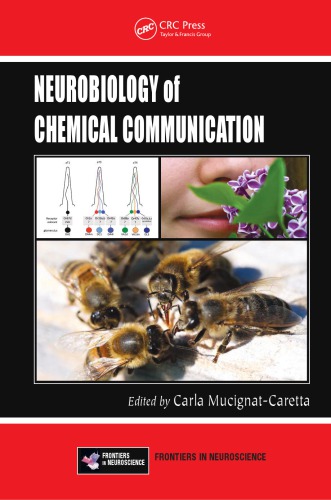| تعداد صفحهها |
612 |
|---|---|
| نوع فایل |
|
| حجم |
6 Mb |
| سال انتشار |
2014 |
89,000 تومان
معرفی کتاب علوم اعصاب ارتباطات شیمیایی ۲۰۱۴
ارتباطات غیر اختصاصی شامل فعال شدن گیرنده های شیمیایی و متعاقب آن فعال شدن سانتروزوم های مختلف است که پاسخ های کل ارگانیسم را هماهنگ می کند – از اصلاح رفتاری تا تعدیل ترشح هورمون. حیوانات برای اعلام حضور خود به اعضای یک گونه و تنظیم تعاملات با هدف ایجاد و تنظیم پیوندهای اجتماعی و تولیدمثلی، سیگنال های شیمیایی غیر اختصاصی را منتشر می کنند که اغلب به آنها فرومون گفته می شود.
در دو دهه گذشته، دانشمندان درک بیشتری از پردازش عصبی این سیگنال های شیمیایی پیدا کرده اند. علوم اعصاب ارتباطات شیمیایی نقش حواس شیمیایی را در میانجی گری ارتباط بین گونه ها بررسی می کند. این نمودار به روز از آخرین پیشرفت ها در این زمینه ارائه می کند و داده هایی را از گونه های آزمایشگاهی و وحشی، از بی مهرگان تا مهره داران، و از حشرات تا انسان ارائه می کند.
این کتاب به بررسی ساختار، آناتومی، الکتروفیزیولوژی و زیست شناسی مولکولی فرومون ها می پردازد. این مقاله نحوه عملکرد سیگنال های شیمیایی بر روی گونه های مختلف پستانداران و غیر پستانداران را مورد بحث قرار می دهد و شامل فصل هایی در مورد حشرات، مگس میوه، زنبورهای عسل، دوزیستان، موش ها، ببرها و گاو می باشد. همچنین موضوع بحث برانگیز فرومون های انسانی را بررسی می کند.
یک مرجع ضروری برای دانشجویان و محققان در زمینه فرمون ها، همچنین منبعی ایده آل برای کسانی است که روی فنوتیپ رفتاری مدل های حیوانی کار می کنند. افراد علاقه مند به زیست شناسی/اکولوژی گونه های وحشی و اهلی.
Intraspecific communication involves the activation of chemoreceptors and subsequent activation of different central areas that coordinate the responses of the entire organism—ranging from behavioral modification to modulation of hormones release. Animals emit intraspecific chemical signals, often referred to as pheromones, to advertise their presence to members of the same species and to regulate interactions aimed at establishing and regulating social and reproductive bonds.
In the last two decades, scientists have developed a greater understanding of the neural processing of these chemical signals. Neurobiology of Chemical Communication explores the role of the chemical senses in mediating intraspecific communication. Providing an up-to-date outline of the most recent advances in the field, it presents data from laboratory and wild species, ranging from invertebrates to vertebrates, from insects to humans.
The book examines the structure, anatomy, electrophysiology, and molecular biology of pheromones. It discusses how chemical signals work on different mammalian and non-mammalian species and includes chapters on insects, Drosophila, honey bees, amphibians, mice, tigers, and cattle. It also explores the controversial topic of human pheromones.
An essential reference for students and researchers in the field of pheromones, this is also an ideal resource for those working on behavioral phenotyping of animal models and persons interested in the biology/ecology of wild and domestic species.




